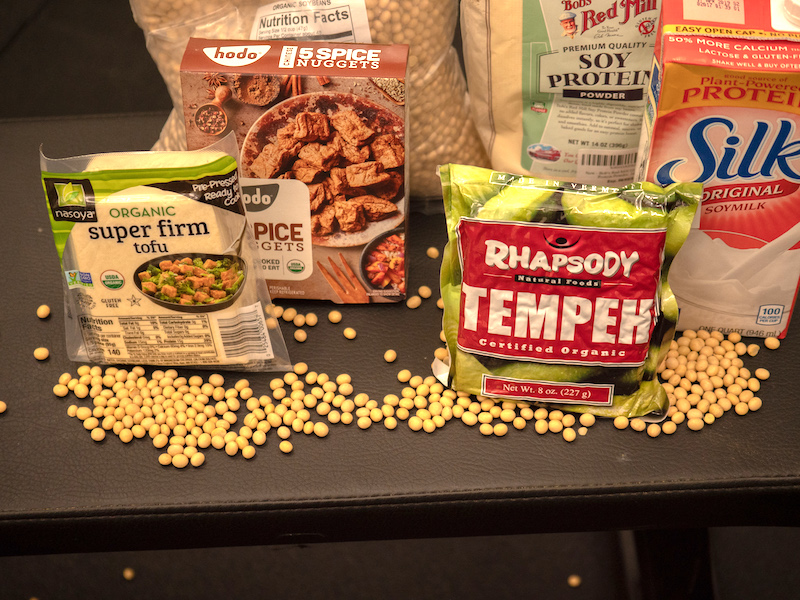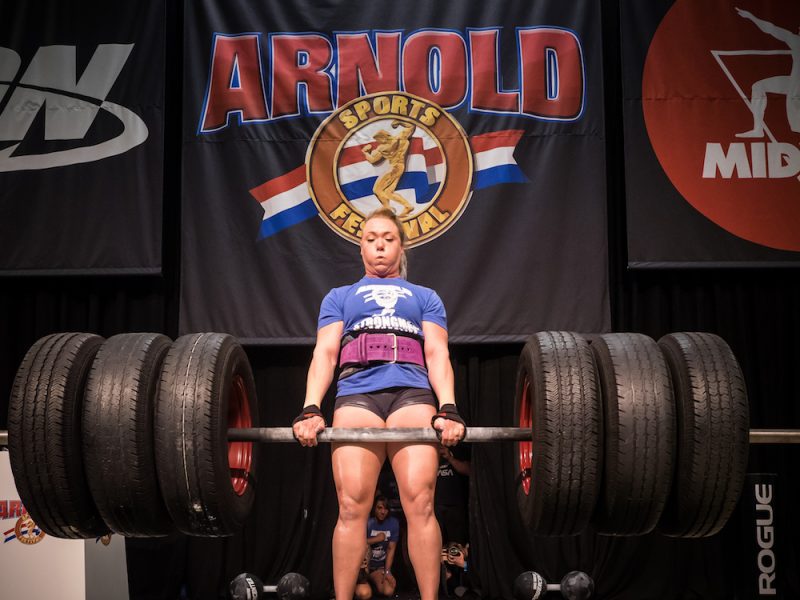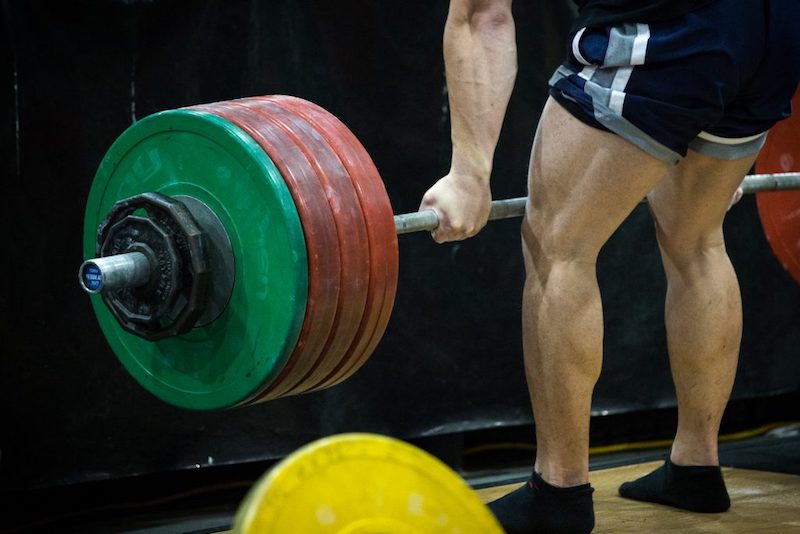One of the most controversial topics in sports nutrition has got to be soy. The humble, unusually high-fat bean has been a dietary staple in much of Asia for thousands of years and today it makes up some 7 to 10 percent of all calories consumed in the United States.(1) And there’s a very pervasive sense that soy is bad for you.
Not just that it’s bad for you, but that it — heaven forbid — feminizes you. Soy contains phytoestrogens, sometimes called plant estrogen, and if that increases the estrogen in your body then it might make your breasts bigger, increase your body fat, make it harder to build muscle, and among men in particular there’s a fear that it’s linked to impotence and low sperm count. These are some of the fears people have. And it’s not like there’s absolutely no evidence for it.
The content on BarBend is meant to be informative in nature, but it should not be taken as medical advice. When starting a new training regimen and/or diet, it is always a good idea to consult with a trusted medical professional.
Why Eat Soy?
Soy is an inexpensive source of high quality protein, along with some other nutrients we’ll examine here.(2)
To get it you can eat the beans or you can turn them into milk or tofu or tempeh or imitation meat. You can always cook it with meat to add some flavor and protein, plus it’s available in protein powders.
People trying to eliminate soy from their diets quickly find it’s in a lot of unexpected places too. It’s crazy common in whey protein powder because soy lecithin, a fatty substance found in the oil, is an emulsifier that’s really good at improving mixability. Most fried things are fried with some amount of soybean oil, you can also find it in a lot of baked goods and candy bars, it’s pretty common in soap, almost all animal feed in the world is soybean meal. It’s incredibly difficult to avoid.
But why would you want to? For athletes, soya is a four-letter word for two main reasons: the first is the question of whether or not it’s as good as animal protein for gaining and maintaining muscle. The second is the issue of whether or not soy increases your estrogen, thereby (purportedly) making it harder to lose fat and gain muscle.
Those are the two main concerns for athletes. There are other arguments surrounding soy – is it useful or detrimental to consume during menopause, for long-term brain health, and so on – but here we want to focus on athletes like you.
So let’s break down those two big concerns.
Is Soy a Complete Protein?
Protein is the priciest of the three macronutrients (the other two being carbohydrates and fat) and if you’re following a high protein diet, you’ve probably found it’s a little expensive to eat a lot of quality animal protein every day. If soy is a complete protein is it fine to swap a steak for some tofu if you feel like it? Is the protein as high quality?
Note that we’re not asking whether or not vegan athletes are as effective as omnivorous ones, that’s a question for another day.
We would also be remiss if we didn’t mention that there are people who contest the very notion that a “complete” protein is all that important to begin with. Many experts believe you just need to eat all the right amino acids throughout the day, not necessarily all at the same time.
But if you share the majority view that complete proteins are important you’ll be glad to hear that soy is complete. (It’s a little low in the amino acid methionine but by and large it’s considered complete.(2))
However, some animal proteins might still be better for building muscle.
Leucine and Soy
Science is leaning toward the notion that when it comes to gaining and retaining muscle, the most important of those essential amino acids is leucine.(3)
Leucine is closely linked to muscle protein synthesis (MPS) which as the name suggests, is a pretty important part of switching on genes responsible for muscle gain.(4) Now, it’s not the be all and end all of muscle gain. It works in concert with other amino acids and when you’re talking about MPS, you need to remember that you can lose muscle as fast or faster than you gain it, which is one reason you still have to consider your overall calories, macronutrients, sleep, exercise, and everything else.
But look, if you want to gain as much strong, functional, athletic muscle as you can, MPS is important and leucine seems to be an important part of that.
Whey protein has more leucine than soy.(4)(5) In 100 grams of whey isolate you can expect about 11 to 13 grams of leucine, Soy has about 8 or 9. If you’re looking at scoops of protein powder it’s a little over 3 grams in whey and a little over 2 in soy, very broadly speaking.
Image courtesy of Examine.com.
That might not seem like much of a difference, but it’s actually about 50 percent. Does that actually matter?
If your main concern is MPS, it might.
“Leucine is one of the main triggers of muscle protein synthesis and it has what they call a threshold effect,” says Dr. Mike T. Nelson, a physiologist, nutrition consultant and adjunct professor at the Carrick Institute. “You need a certain amount of leucine to start that initiation process and then more beyond that doesn’t appear to be beneficial, but you do need enough to kickstart that whole process.”
That threshold? Probably about 3 grams.
“Whey has an incredibly high biological value, incredibly high leucine content, and it’s digested rapidly so you get this quick rise in muscle protein synthesis,” says Brian St. Pierre, the Director of Performance Nutrition at Precision Nutrition. “And if you look at short term studies, two hours after a workout you see this rapid rise in protein synthesis with whey moreso than soy.”
But remember that threshold effect: it seems we may need roughly 3 grams of leucine to amp up our MPS. So while that’s easy to hit with 20 grams of whey protein, you probably just need 30 grams of soy protein to achieve the same effect. So long as you’re consuming slightly larger doses, MPS should be the same. (And that’s if all these studies we’re citing have gotten all these concepts right. We’re publishing new studies about this stuff all the time.)
This information might be particularly important among older folks. A few studies concluded when comparing equal doses of whey and soy that muscle protein synthesis is higher with whey in that age group.(6)(7)
“There were a couple of studies in people where the mean age was 71 that found if you take 20 grams of soy compared to 20 grams of whey, in older people the whey was better,” says Nelson. “But we also know that as people age they get what’s called anabolic resistance, meaning it may take a higher dose of protein to get the same effect. So that complicates the issue.”
Basically, older folks have a higher threshold for muscle protein synthesis so they might need larger servings of protein if they want to minimize protein breakdown. This might be more important to know if they’re eating small amounts of soy.
“So if you have a high enough dose, a lot of times that takes care of any issues with the smaller dose,” says Nelson. “(But) if you have a population where they can’t consume large amounts of protein, higher quality protein is probably going to make a greater difference.”
All of this information may have convinced you there’s no point sweating the difference, or it may have served to convince you there’s a critical difference. This kind of response is a quandary with soy.
The facts appear to be that if you’re eating a good 30 grams of protein there’s probably no difference between whey and soy for MPS. (Remember that we’re just using whey as an example because it’s extraordinarily high in leucine.) If you’re eating smaller amounts of protein or if you’re a little older? It may be worth making sure your serving has 30 or more grams of soy protein or to supplement with some branched chain amino acids if muscle protein synthesis is your goal.
And that goes for any protein, really: a good 20 to 30 grams is better than nibbles of protein here and there.
But it bears repeating: muscle protein synthesis isn’t everything when it comes to muscle. There are a million other pieces that also need to be in place.
“And when you look at longer term, chronically fed trials and people are fed soy, whey, or casein and they actually look at lean mass accumulation, what do you see? Insignificant differences,” adds St. Pierre.(8) “What we’re really looking for is changes in whole body or skeletal muscle turnover over time, and if you’re having a serving or two of soy per day there’s not a whole lot of evidence it’s going to be significantly worse than whey protein.”
Soy and Estrogen
Now, there’s a good chance you’ve spent the entirety of this article saying, “So what if soy has all the right amino acids? What kind of muscle am I going to be building if I’m full of estrogen-packed soy?”
Let’s go there.
There are compounds in soy called phytoestrogens and there is a storm of debate surrounding the idea of whether or not that estrogen acts like or mimics human estrogen when it’s in the body.
According to a paper published in American Family Physician people are usually talking about isoflavones called genistein and daidzein, which weakly bind to human estrogen receptors alpha and beta where they may act like selective estrogen receptor modulators.(2)
Which many interpret as “soy will make your boobs bigger.” Or soy will increase your estrogen or lower your testosterone or decrease your muscle.
For starters, different soy products have huge differences in how many isoflavones they contain.
Table courtesy of Examine.com.
If you take a look at this table, made with information from the USDA, it shows that 100 grams of soy protein isolate has over three times as many isoflavones as 100 grams of tofu and there’s practically none in soy sauce or miso soup. So a discussion about limiting soy protein supplements is completely different to a discussion of whether or not you should avoid tofu or soy sauce or soy lecithin because you’re concerned about being “feminized.”
Secondly, a lot of foods contain phytoestrogens. They’re in coffee, oats, rice, apples, legumes, and plenty of other foods.(9) If you’re this worried about phytoestrogens, you may want to think about auditing your entire diet.
Third, phytoestrogens have also been linked to a ton of health benefits. They have some antioxidant effects and a 2007 paper suggested that they’re a big part of the anti-viral effects of apples and other fruits.(10) Genistein (one of the main isoflavones in soy) has some pretty serious anti-cancer effects linked to it as well, especially breast and prostate cancer, although we should emphasize that nothing is definitive here.(11)(12)(13)(14) There’s just a lot of interesting research suggesting it might actually be a good idea to deliberately add phytoestrogens to your diet.
But yes, they’re pretty high in soy. And this is one of those really confusing areas of nutrition where it’s as easy to find people glorifying soy as it is to find people condemning it.
But Does Soy Lower Your Testosterone!?
In the pro-soy arguments there was a hugely popular meta analysis published in Fertility and Sterility in 2010 that looked at fifteen placebo-controlled studies and thirty-two simpler studies — so this counts as many studies — and it found that,
Neither soy foods nor isoflavone supplements alter measures of bioavailable Testosterone concentrations in men.(15)
And these studies included folks taking up to 70 grams of soy protein a day.
What about athletes? A good study in the Journal of the International Society of Sports Nutrition had had resistance trained men doing a 12-week strength training program while consuming 50 grams of soy concentrate or isolate a day. (16) And remember that those products are extremely high in isoflavones. The men’s serum testosterone did not decrease when compared to participants who were taking whey.
Which sounds pretty great, right?
But we can’t pretend there’s no data to the contrary. One 2017 study on phytoestrogens and dimorphic sexual systems, for example, confidently stated:
“…animal data unequivocally demonstrates that soya isoflavones… can permanently alter the structure and function of neuroendocrine pathways in both sexes.”(17)
There are also studies associating high soy intake with lower sperm count, one linked it with a 19-year-old’s erectile dysfunction, another suggested that three liters of soy milk per day was the reason a 60-year-old man was growing breasts.(18)(19)(20) Some animal studies have also drawn a clear line between phytoestrogen intake and lower testosterone levels.(21)
It’s confusing.
But look, it’s certainly true that there’s more evidence that soy doesn’t do anything for your testosterone than there is evidence to the contrary, especially for younger people. Importantly, the guys in those studies we just cited were consuming a lot of soy. Three liters of soy milk a day is no joke.
“The case reports you see when people develop problems are usually when people have really high soy intakes for an extended periods of time, like six or twelve months,” says St. Pierre. “Especially if the soy you’re having in moderate amounts is leaning toward minimally processed soy foods, I think you’re going to be in good shape.”
It’s also worth pointing out, though, that many studies that suggest soy is fine don’t always actually show that. They’re showing that on average it’s fine. The actual data will show bell curves: for most people it was fine, for some it was beneficial, and for some it was detrimental. When they average it out it equals zero, so they’ll say there’s no effect. You need to look at the actual studies, says St. Pierre.
“When you look at the individual data, it falls on some kind of curve so I think it’s always important to keep that in mind when you’re coaching individuals to pay attention to the averages, but pay attention to your individual response,” he says.
Are there other explanations for all this conflicting information?
“I take the position if half the camp say no, and half the camp say yes, I’m willing to stand in the middle and say it probably doesn’t have any practical impact when you maintain balance,” says Dr. Trevor Kashey, an Ohio-based biochemist and nutritionist. “Basically, if soy were that big an issue, it would have a practical impact on the entire populations of people where a large percentage of their nutrition comes from soy. So I think people are stylin’.”
Soy and Athletes
Now if you’re an athlete you’re probably thinking, “Sure, moderation is fine for normal people but I’m an athlete. I want everything to be dialed in. And if there’s even a chance that a gram of soy might affect a nanogram of testosterone in my body, I don’t want to take that chance.”
Dr. Kashey designs the diets of elite athletes for a living and his position is that the protein and vitamins and minerals outweigh any potential (and not very established) negative impacts.
“I’m also not so sure that estrogen in practical terms, and I’m also saying estrogen mimics, prevent muscle growth on a practical level,” he adds. “Testosterone is a very small part of the equation if you’re within normal ranges. If your lifestyle is so damn perfect that the limiting factor to your muscle growth is eating soybeans, then shit you are dialed in!”
Chances are that even if you’re an Olympic athlete you aren’t sleeping or eating well enough for soy to matter in practical terms. So when you do the risk-benefit analysis, the benefits of soy are very likely worth it.
“Even if soy bioactives do limit muscle growth, then absolute worst case you’ll reach your genetic maximum in muscle mass at a slightly slower rate,” says Kashey. “So your ceiling to build muscle is the same, you just might take a fraction of the amount of time longer to get there.”
Which is calming. There are also people who approach the topic differently. Dr. Nelson takes a slightly different position with the athletes he works with, figuring that the lack of complete scientific consensus is a sign that he might as well err on the side of caution and limit soy. He prefers whey or rice protein.
“If someone comes to me and says they don’t have any restrictions and what should they eat, soy protein’s going to be pretty far down on that list of options,” he says. “So what I do in my practice is if someone comes to me living on a high amount of soy protein and they’re a male, I’ll send them to a doctor to get testosterone and some other measurements done. Will I try to find other sources that are better? Yeah, I think so. Especially if they’re older.”
The Takeaway
So. Is it OK for athletes to consume soy!?
Look, it’s in our nature to seek simple answers to complex questions and as satisfying as it would be to say soy is completely fine or completely off limits, it’s just not quite that simple.
We can’t pretend that that there are plenty of experts who feel that while it’s probably not bad for you, you might as well avoid it. Dr. Nelson said more than once that he limits soy in his omnivorous athletes just to be safe. (He did add that this approach is more theoretical than based on a ton of data.)
The vast majority of studies suggest that so long as it’s not your sole protein source, one or two servings a day is fine and probably only going to provide health benefits.
If you’re worried about phytoestrogen, consider avoiding soy protein isolate and stick to the not-so-processed foods like tempeh and tofu. If you’re really worried about phytoestrogens, you can still have soy sauce and soy lecithin, that’s fine. If you’re really really worried about phytoestrogens, remember that you’ll need to start avoiding coffee, apples, and a bunch of other foods.
But you almost certainly shouldn’t be that worried about them. If you’re consuming soy all day every day — which some people do — you might want to diversify your diet and get some bloodwork, but remember that most experts would say the same thing if you’re eating any food all day every day. Even eating broccoli for every meal isn’t a great idea, very high amounts of it might can interfere with thyroid function.(22)
Humans are meant to have diverse diets. That much is uncontroversial.
Anyway, soy is cheaper than meat, a great source of protein and nutrients, and moderate amounts probably lower your risk for a bunch of diseases.
But if you want to be 100 percent sure you’re not in the group of people who get bad reactions? Get some blood work before, during, and after a few months of eating soy and see how you feel. If you’re fine, you’re probably fine. But you’re probably not a doctor and we aren’t giving you medical advice, so meet with your physician if you’re concerned about any of this.
References
- Blasbalg TL, et al. Changes in consumption of omega-3 and omega-6 fatty acids in the United States during the 20th century. Am J Clin Nutr. 2011 May;93(5):950-62.
- Michelfelder AJ. Soy: a complete source of protein. Am Fam Physician. 2009 Jan 1;79(1):43-7.
- Norton LE, et al. Leucine content of dietary proteins is a determinant of postprandial skeletal muscle protein synthesis in adult rats. Nutr Metab (Lond). 2012 Jul 20;9(1):67.
- Breen L, et al. Leucine: a nutrient ‘trigger’ for muscle anabolism, but what more? J Physiol. 2012 May 1;590(9):2065-6.
- Phillips SM, et al. The science of muscle hypertrophy: making dietary protein count. Proc Nutr Soc. 2011 Feb;70(1):100-3.
- Yang Y, et al. Myofibrillar protein synthesis following ingestion of soy protein isolate at rest and after resistance exercise in elderly men. Nutr Metab (Lond). 2012 Jun 14;9(1):57.
- Phillips SM, et al. The role of milk- and soy-based protein in support of muscle protein synthesis and muscle protein accretion in young and elderly persons. J Am Coll Nutr. 2009 Aug;28(4):343-54.
- Hector AJ, et al. Whey protein supplementation preserves postprandial myofibrillar protein synthesis during short-term energy restriction in overweight and obese adults. J Nutr. 2015 Feb;145(2):246-52.
- Kuhnle GG, et al. Phytoestrogen content of beverages, nuts, seeds, and oils. J Agric Food Chem. 2008 Aug 27;56(16):7311-5.
- Martin JH, et al. Does an apple a day keep the doctor away because a phytoestrogen a day keeps the virus at bay? A review of the anti-viral properties of phytoestrogens. Phytochemistry. 2007 Feb;68(3):266-74.
- Yan L, et al. Soy consumption and prostate cancer risk in men: a revisit of a meta-analysis. Am J Clin Nutr. 2009 Apr;89(4):1155-63.
- Andres S, et al. Risks and benefits of dietary isoflavones for cancer. Crit Rev Toxicol. 2011 Jul;41(6):463-506.
- Bouker KB, et al. Genistein: does it prevent or promote breast cancer? Environ Health Perspect. 2000 Aug;108(8):701-8.
- Pavese JM, et al. Genistein inhibits human prostate cancer cell detachment, invasion, and metastasis. Am J Clin Nutr. 2014 Jul;100 Suppl 1:431S-6S.
- Hamilton-Reeves JM, et al. Clinical studies show no effects of soy protein or isoflavones on reproductive hormones in men: results of a meta-analysis. Fertil Steril. 2010 Aug;94(3):997-1007.
- Kalman D, et al. Effect of protein source and resistance training on body composition and sex hormones. J Int Soc Sports Nutr. 2007 Jul 23;4:4.
- Patisaul HB. Endocrine disruption by dietary phyto-oestrogens: impact on dimorphic sexual systems and behaviours. Proc Nutr Soc. 2017 May;76(2):130-144.
- Chavarro JE, et al. Soy food and isoflavone intake in relation to semen quality parameters among men from an infertility clinic. Hum Reprod. 2008 Nov;23(11):2584-90.
- Siepmann T, et al. Hypogonadism and erectile dysfunction associated with soy product consumption. Nutrition. 2011 Jul-Aug;27(7-8):859-62.
- Martinez J, et al. An unusual case of gynecomastia associated with soy product consumption. Endocr Pract. 2008 May-Jun;14(4):415-8.
- Pihlajamaa P, et al. The phytoestrogen genistein is a tissue-specific androgen receptor modulator. Endocrinology. 2011 Nov;152(11):4395-405.
- Bajaj JK, et al. Various Possible Toxicants Involved in Thyroid Dysfunction: A Review. J Clin Diagn Res. 2016 Jan;10(1):FE01-3.













